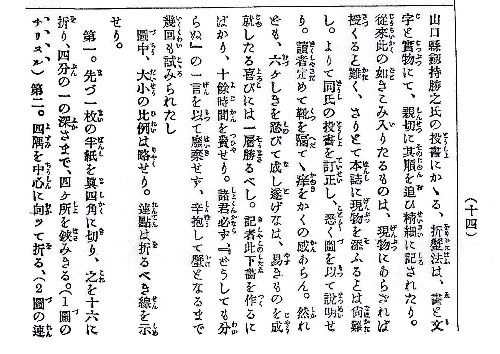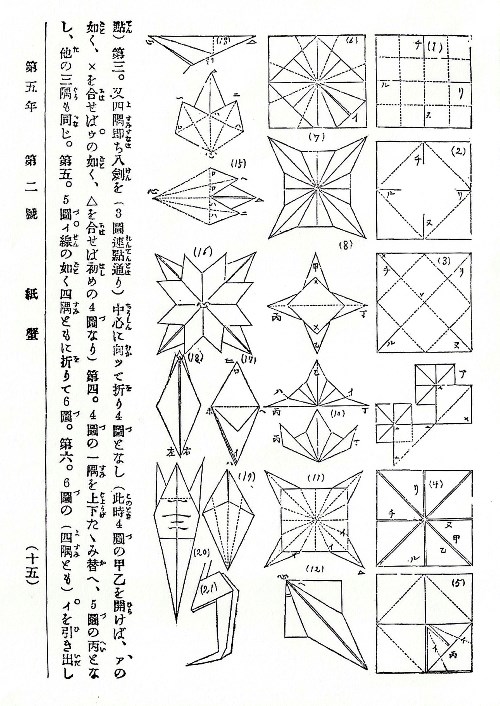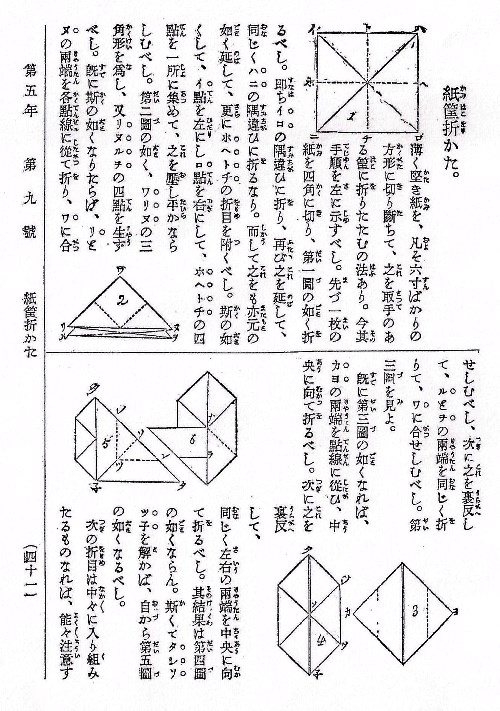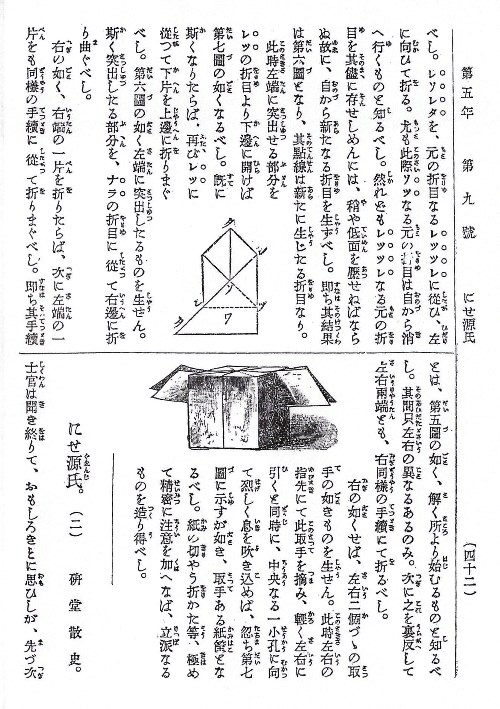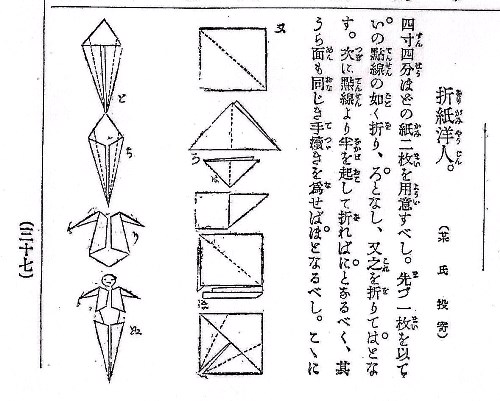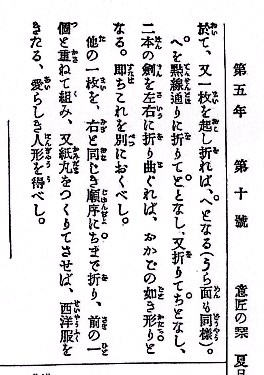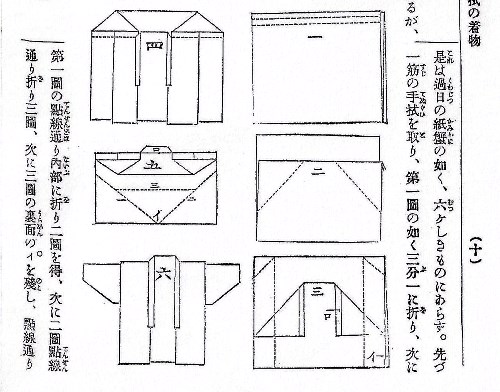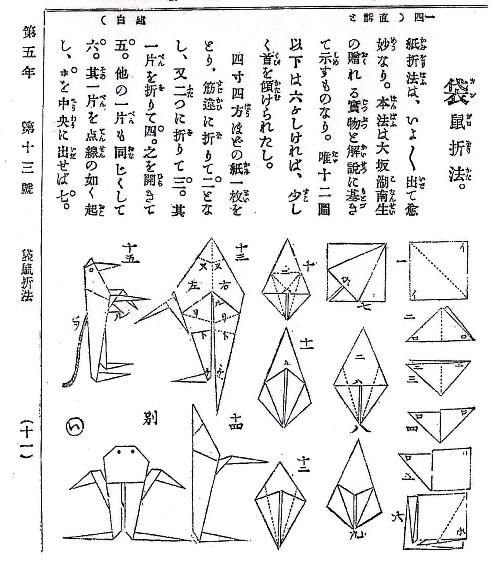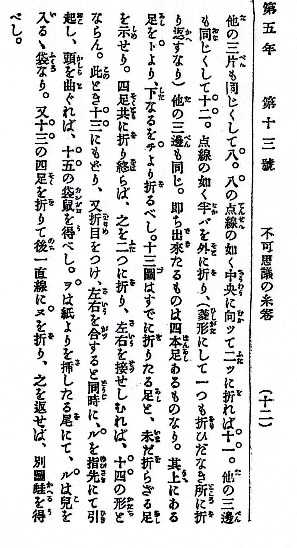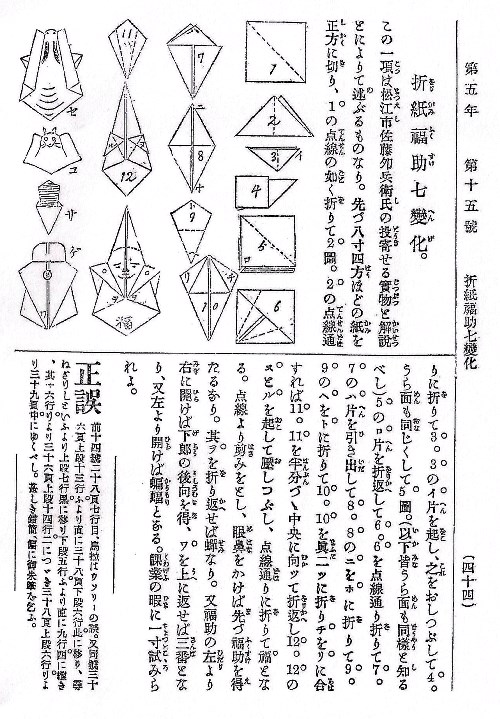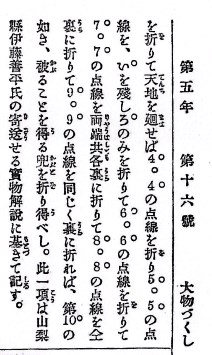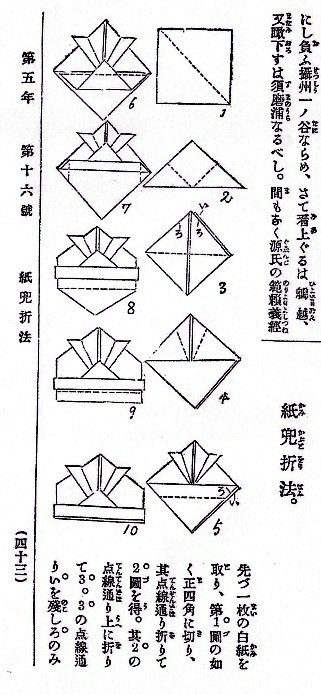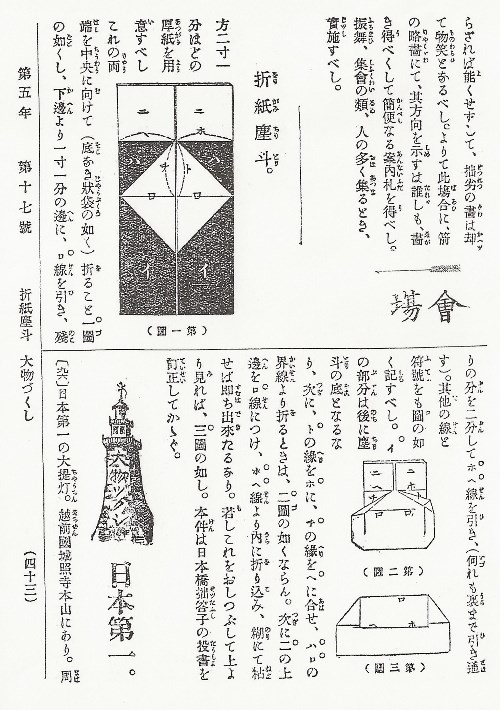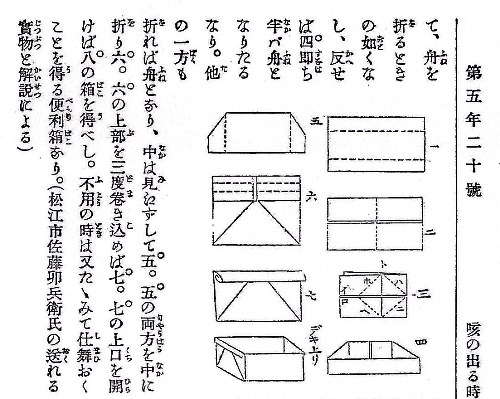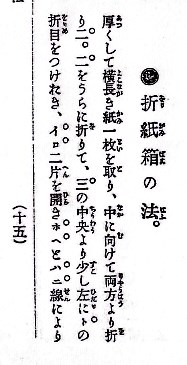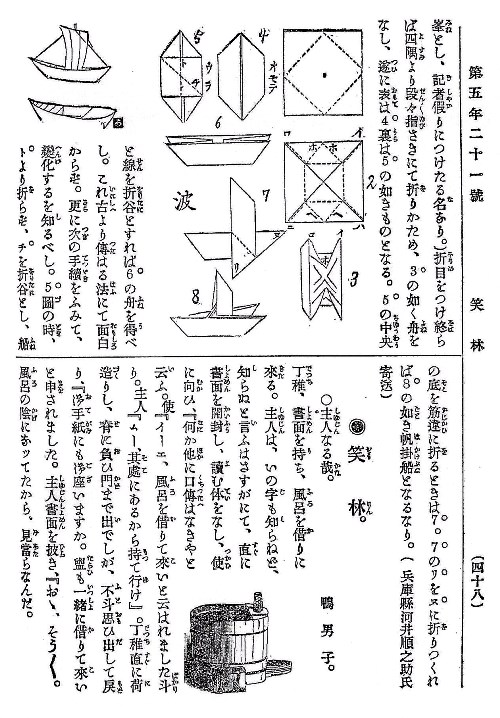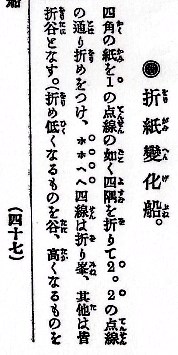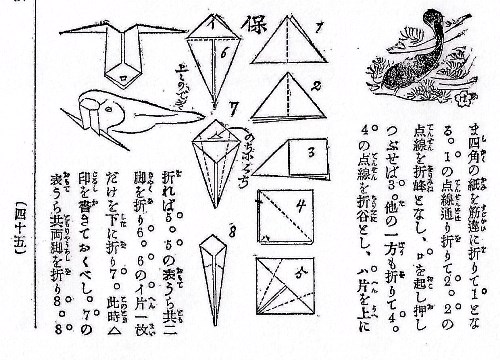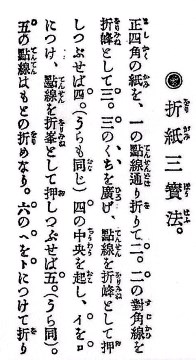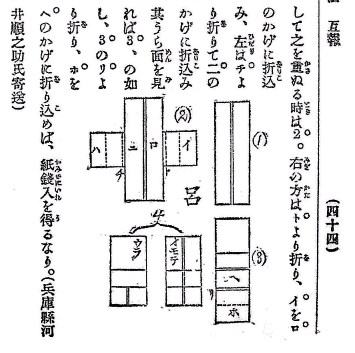| The Public Paperfolding History Project
Last updated 27/1/2024 x |
|||||||
| Articles in Shokokumin Magazine 1893 | |||||||
| Between
1893 and 1896 a number of articles explaining (mostly)
simple paperfolds, mostly under the generic title
'Origami Method', were published in 'Shokokumin' (Young
National) children's magazine. (Information from search
for records mentioning origami in the database of the
National Diet Library.) This magazine seems to have been
published bi-monthly, with 24 issues per year. This page provides details of the articles published in 1893. My thanks to Nobuko Okabe for kindly obtaining details of those of the articles shown below and explaining to me what the articles say and some of the cultural meaning behind the words. The designs were contributed by readers of the magazine living in many different parts of Japan. We cannot tell from the names whether they were adult readers or children. It seems reasonable to assume that these designs, which are noteworthy for their variety, are a good representation of the kind of designs that were in circulation within Japanese society at this time. ********** Article 1 in issue 5/2 - Crab Contributor: Katsuyuki Kenmochi of Yamaguchi Prefecture
********** Article 2 in issue 5/9 - Box - The Kettle Contributor not stated
********** Article 3 in issue 5/10 - Western Person (compound design) Contributor Takejiro Ishitaka of Kyoto.
********** Article 4 in issue 5/12 - Kimono folded from a hand towel - The Kimono Contibutor: Shoraishi (?) of Yamagata prefecture
********** Article 5 in issue 5/13 - Kangaroo and Frog Contributed by Konan Osaka (or possibly Konan of Osaka) Either a kangaroo or a frog can be obtained by folding the last two steps differently. The tail of the kangaroo is a separate piece of paper.
********** Article 6 in issue 5/15 - Fukusuke with Seven Changes (ie a Fukusuke which can be altered to make several (though not actually seven) other designs.) Contributed by Uhei Sato of Matue City (Shimane Prefecture)
********** Article 7 in issue 5/16 - Kabuto Contributed by Zenbei Ito of Yamanashi Prefecture
********** Article 8 in issue 5/17 - Chiritori (Dustpan) Contributed by: Settoshi Nihonbashi
********** Article 9 in issue 5/19 - Fox Contributed by Eizo Masaki of Osaka
********** Article 10 in issue 5/20 - Box - The Collapsible Box Contributed by Uhei Sato of Matsue City
********** Article 11 in issue 5/21 - Transforming Ship - The Double Boat / Boat with Sail Contributed by Kawai Junnosuke of Hyogo Prefecture. Note: The Editor says he calls some lines 'Mine' (crest)" and others 'Tani' (Valley) in the diagrams. There is a modern online article mentioning this article here.
********** Article 12 in issue 5/22 - Catfish Contributed by Konan Osaka (or possibly Konan of Osaka) This issue also contains instructions for cutting out two symmetrical designs from a square of paper.
********** Article 13 in issue 5/23 - Sanbo - Sanbo on Legs Contributed by Teiichiro Fukuzumi of Kanagawa, Yoshiyuki Koyama of Kumamoto and Aisuke Sata of Tokyo.
********** Article 14 in issue 5/24 - Coin Purse - The Business Card Holder Contributed by Junnnosuke Kawai of Hyogo Prefecture
********** |
|||||||
